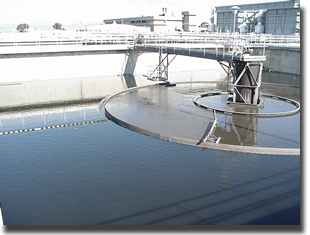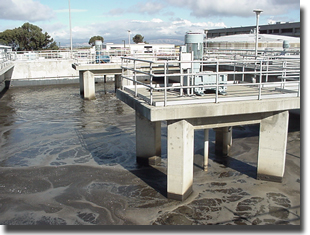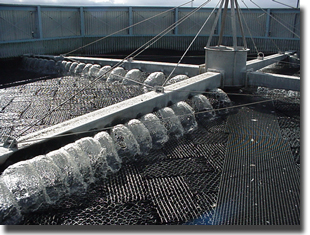Wastewater
| What is wastewater? Wastewater is water containing wastes from residential, commercial, and industrial processes. Municipal wastewater contains sewage, gray water (e.g., water from sinks and showers), and sometimes industrial wastewater. Large industries, such as refineries, also generate wastewater. Wastewater requires treatment to remove pollutants prior to discharge. How do we regulate wastewater?
Permits contain specific requirements that limit the pollutants in discharges. They also require dischargers to monitor their wastewater to ensure that it meets all requirements. Wastewater dischargers must maintain their treatment facilities, and treatment plant operators must be certified. We routinely inspect treatment facilities and enforce permit requirements. Many wastewater discharges are permitted individually. However, discharges that are of less threat to water quality and that are similar are permitted through general permits. The Regional Water Board adopts permits at public hearings after consideration of public comments. To receive email notifications of upcoming comment opportunities, reported. During wet weather, for example, unauthorized discharges can occur from sanitary sewers when too much stormwater flows into manholes and groundwater filters through cracks in collection systems. Sanitary sewer overflows must be reported. We follow up on reports of unauthorized discharges with enforcement as warranted. What is being done to prevent wastewater pollution? Have wastewater regulations been effective? How can I get more information? |
   |
Links
- NPDES Wastewater Permits
- General NPDES Permits
- Watershed NPDES Permit
- Wastewater Recycling and Reuse
- On-Site Treatment Systems
- Operator Certification
- Board Meetings
- Opportunities to Comment
- Email Subscriptions
- Water Quality Improvements
- Enforcement
- Sanitary Sewer Overflows
- Pretreatment
- Pollution Prevention
- Stormwater


